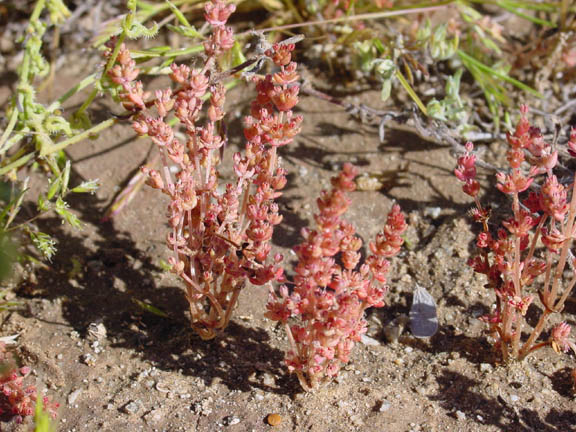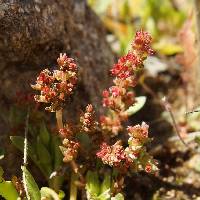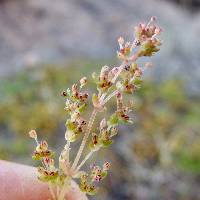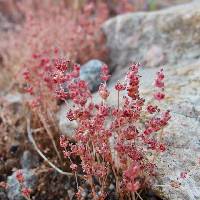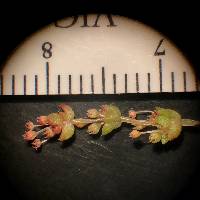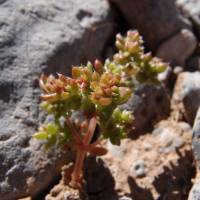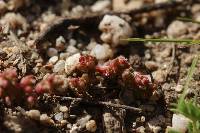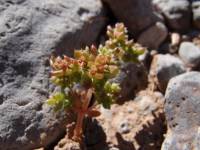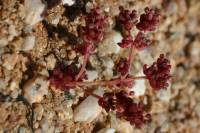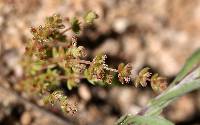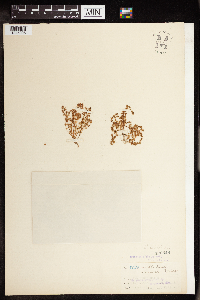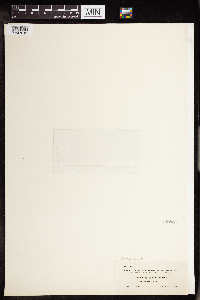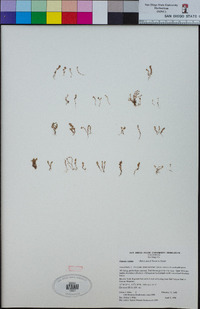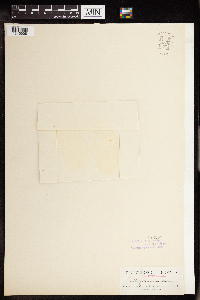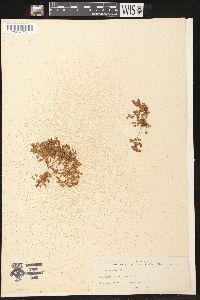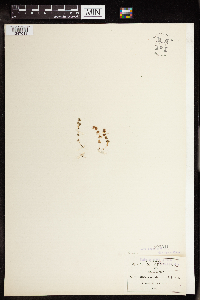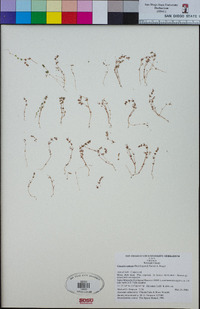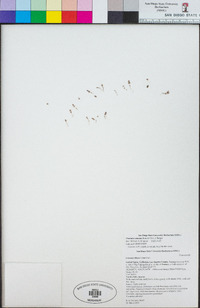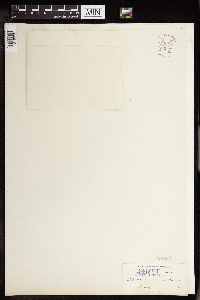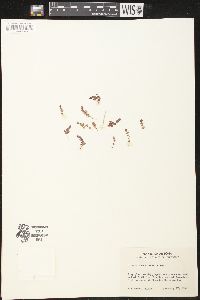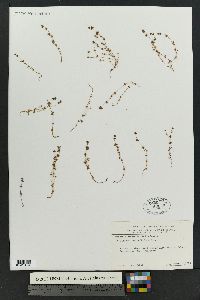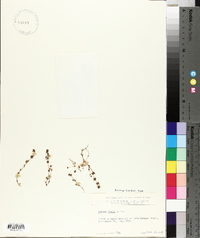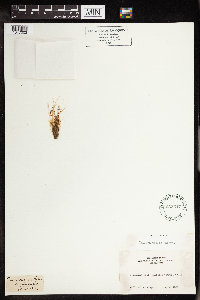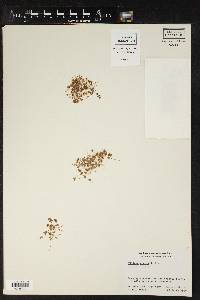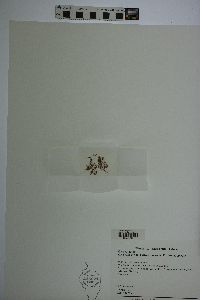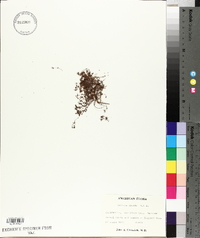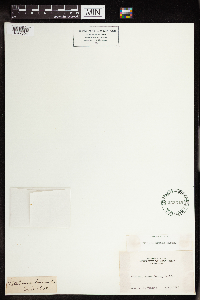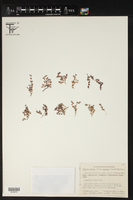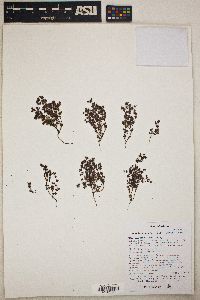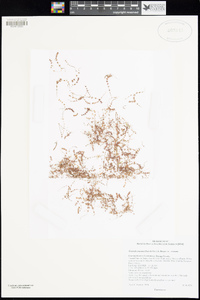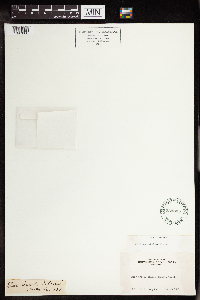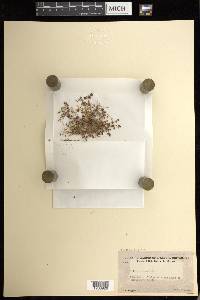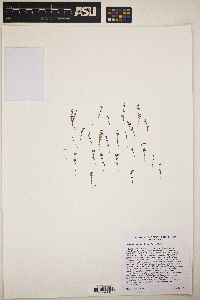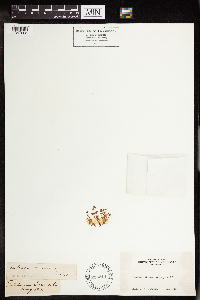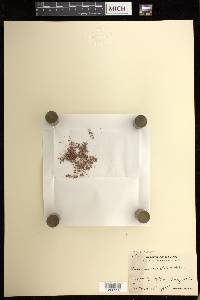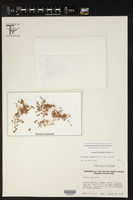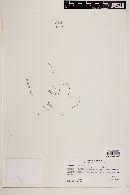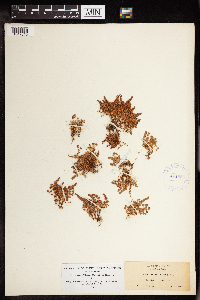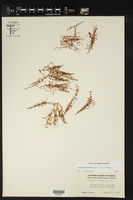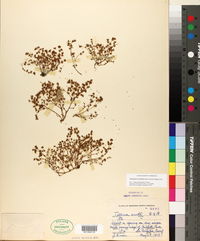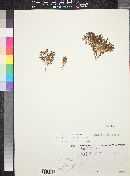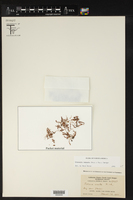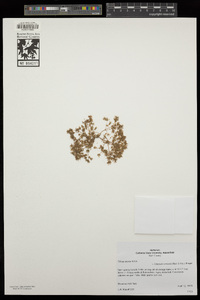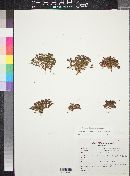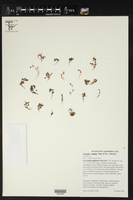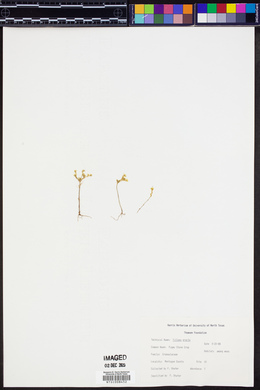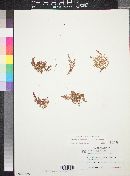Crassula connata
|
|
|
|
Family: Crassulaceae
Sand Pygmyweed, more...pygmy weed
[Crassula erecta A.Berger, moreTillaea connata , Tillaea erecta Hook. & Arn., Tillaea minima Miers, Tillaea rubescens H.B. & K.] |
Plants terrestrial, annual. Stems erect, red in age, simple or bushy-branching, 2-6(-10) cm. Leaf blades ovate to oblong, 1-3(-6) mm, apex acute to rounded. Inflorescences often compact; flowers (1-)2 per node. Pedicels 0.2-6 mm. Flowers (3-)4[-5]-merous; sepals lanceolate, 0.5-2 mm, apex acute to acuminate; petals narrow-triangular, 0.6-1.5 mm. Follicles ascending, 1-2-seeded, ovoid; old follicles ascending, boat-shaped. Seeds ellipsoid, 0.3-0.6 × 0.1-0.3 mm, not papillate, dull, rugulose. 2n = ca. 16. Flowering spring. Open, gravelly places, on mossy rocks; 0-1500 m; B.C.; Ariz., Calif., Oreg., Tex., Wash.; Mexico; Central America (Guatemala); South America (Argentina, Chile, Uruguay). M. Bywater and G. E. Wickens (1984) proposed five varieties, four partly in the flora area, where they have largely overlapping ranges and overlapping characteristics. Further, some supposed differences probably result from local and year-to-year rainfall differences. Although probably having some genetic basis, these varieties seem too poorly defined to be useful (R. V. Moran 1992b). S. L. Hatch et al. (1990) were first to report Crassula connata in Texas, from a 1968 collection (F. B. Jones 7292), suggesting that it may be a recent arrival there. It was first discovered in British Columbia and Washington in 1977 (A. Ceska and O. Ceska 1980) and is treated as a rare native species by the heritage program in British Columbia and the Washington Natural Heritage Program, where it has a habitat typical of other southern disjunct natives (A. Ceska, pers. comm.).
Plant: herb, erect, simple to bushy branching, 2-6(-10) cm high, in age red Leaves: ovate to oblong, obtuse to acute or apiculate, 1-3(-6) mm long, 0.5-1.5(-2) mm wide INFLORESCENCE: mostly cymose or thyroid, in ours the flowers solitary in axils of leaves, either 1 or 2 per node, the flowers clustered when upper leaves smaller and crowded Flowers: (1-)2 per node, mostly crowded, 0.5-1.5 mm long, on pedicels 0-6 mm long; sepals nearly separate; petals in ours separate; stamens as many as and opposite sepals; nectar glands in ours linear; pistils separate; sepals triangular-lanceolate, acute to aristate; petals longer to shorter, narrowly triangular, acute to attenuate Fruit: FOLLICLES 1-2-seeded, ovoid, tapering to subterminal style; SEEDS ellipsoid, not papillate Misc: sandy and gravelly soil of washes, hillsides, and flats; 300-1400 m (1000-4600 ft); Jan-May Notes: plant reddish; flowers minute in axils References: Moran, Reid. 1994. Bixaceae. J. Ariz. - Nev. Acad. Sci. Volume 27, 190-194. R. Moran - Crassulaceae - JANAS 27:190-194. ASU specimens. Moran 1993 Duration: Annual Nativity: Native Lifeform: Succulent General: Erect herb, simple to bushy branching 2-6 cm high, in age red. Leaves: Ovate to oblong, obtuse to acute or apiculate, 1-3 mm long, 0.5-1.5 mm wide. Flowers: Mostly crowded, 1-2 per node, 0.5-1.5 mm long, on pedicels 0-6 mm long, sepals triangular-lanceolate, acute to aristate; petals longer to shorter, narrowly triangular, acute to attenuate. Fruits: Follicles 1-2 seeded, ovoid, tapering to subterminal style. Ecology: Found locally abundant in sandy and gravelly soil of washes or small depressions, on hillsides or flats from 1,000-4,500 ft (305-1372 m); flowers January-May. Distribution: OR to AZ and Baja Calif, MEX; Chile Notes: It is distinct as it ages red, the little delicate flowers is often only discovered when you get down on the ground and look carefully. Ethnobotany: Unknown Etymology: Crassula is from the Latin crassus, thick, while connata means connate or together. Synonyms: Tillaea connata, Tillaea erecta Editor: SBuckley, 2010 |
|
|
|

